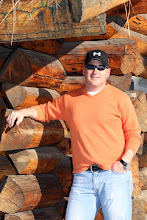Thinking about the upcoming terrain is important. Not knowing how your new team will react in those situations can scare the heck out of a new leader. Worse for the new leader would be if your team knew what was just over the horizon and failed to let you in on it.
The earliest part of the race is organized for the public fanfare of the ceremonial start, the “Big city”, the lights, the dignitaries and the send off. For the most part this area is intentionally sculpted for ease of start. Streets are covered with snow and the path is clearly marked while “Race Officials” make sure the interference is minimized.” This will, soon enough, end and taking the time to get the “lay of the land” is an important step to staying right side up.
No one would dream of being hired the day before or the day of the race, jump on the sled with 16 trained athletes capable of pulling 300 lbs each or around 5000+ lbs easily as a unit. However, in business, that’s about the size of it, right? We are promoted in a pinch and need to deliver incredible results fast, in difficult settings, with daunting obstacles.
In the Iditarod Dog Sled Race, there are a number of different terrains that teams face. Looking at just a few of those today and tomorrow can help.
Step 1 - Break out the map.
The primary method for understanding the terrain is to break out the map. A map will have all of the necessary information and with some insight will be incredible useful if you’ve never run this trail before. If you have, it will be the place where you record your refined strategy.
1a of breaking out the map is to study the key or legend. The key or legend is the filter or standard that allows the proper perspective. What may look like no big deal on the map may be, in reality, a life or death section of the trail.
With obstacles and terrain, the first question I would ask goes to timing. What is the next section of the trail and that becomes the immediate focus. From there, comes developing the game plan and all of the standard planning phases (short, medium, longer) but first, we need to know the next quarter mile – or in my case (when I flipped the sled coming out of the kennel) the next 100 feet!
Big Rocks first!
One of the major terrain areas is the Alaska Mountain Range. Since this is one of the most daunting obstacles – you’ll want to know how much time you have before starting up the range? Again, this is where you need the perspective of those that you report to and those that report to you. What looks like a hill on the map, can be a 6200 meter (20,000 ft) mountain. What is the first major hurdle? What is the major event of the year? When will these occur? What does our annual business cycle look like? Where are we in that cycle? Where are we about to drive off a cliff?
For me the largest obstacles were easy: Don’t hit the supply building and don’t hit the cabin.
Checkpoint and equipment!
The next question would be: Are we equipped for such a journey? What supplies will we need? How long do we run before the first stop? Am I properly outfitted for this? If not, where can I get the right supplies fast? Checkpoints are symbols. Stations are where you check in with race officials, find out if your timing is in line, get a fresh change of clothes, grab a little rest, but most important of all – refuel.
If you or your team runs out of gas (emotion, motivation, physical stamina, burn out) or your sled (department/division/company) runs out of gas (Capital, funding, resources, cash flow, support) – your journey is over - over before it has gotten to its’ “Burled Arch”.
Hopefully, you were able to do your homework on the sponsors of the sled (the company) before accepting the musher’s position – to make sure they could properly fund such an adventure – but even when you’ve checked it all out things can go wrong and economic “storms” can blow in and wipe it out!
Much more to cover on this - frozen rivers; rough, snow-less patches; gorges; and the icy barren coast…
For today, think about the terrain in front of you, who can help shed light on what that map looks like in reality and does anybody on the team see a mountain or cliff in the next run. Talk to you tomorrow!



